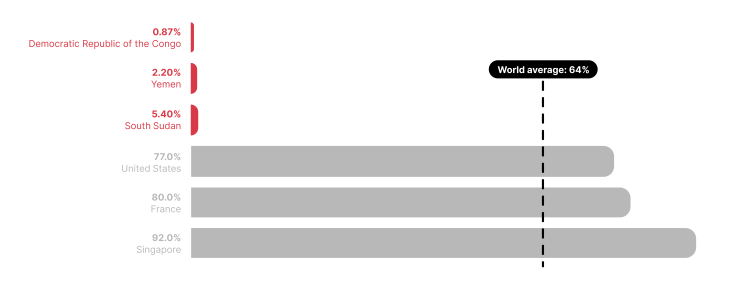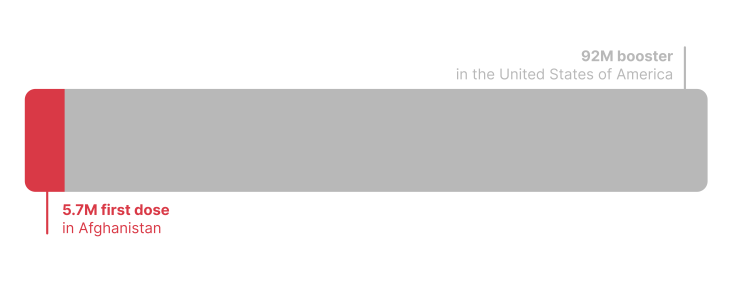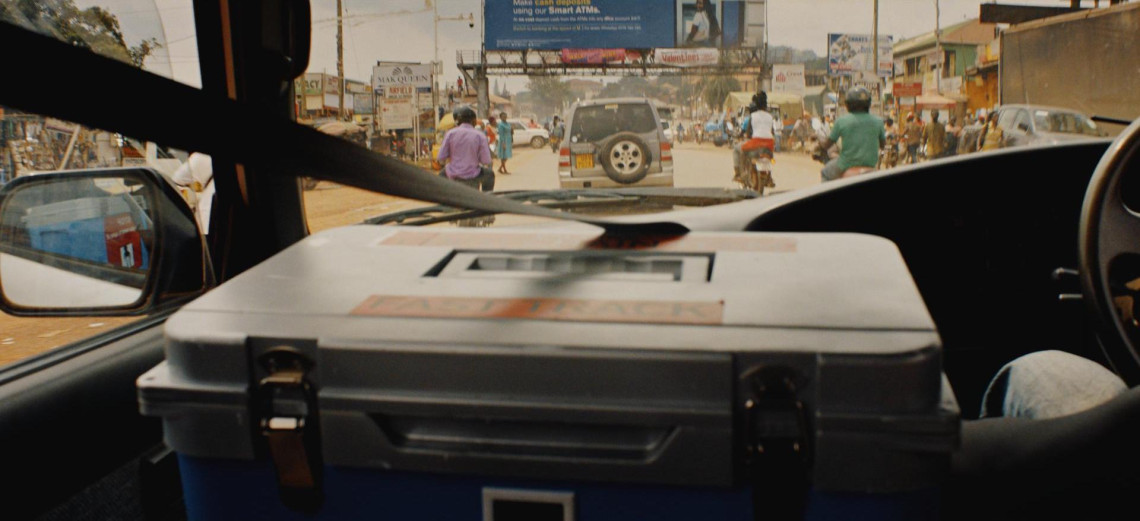Millions of people in war zones are defenceless against the spread of COVID-19 and new variants because they have no access to vaccines. Of the 11 billion COVID-19 vaccine doses administered globally, only a fraction have reached conflict-affected countries.
Of the 25 countries with the lowest vaccination rates in the world today, more than half of them are embroiled in armed conflict.
Percentage of people who have received at least one vaccine dose.

Countries in protracted conflict often have various inherent challenges when it comes to vaccine management. Starting from a lack of cold chain and storage capacities to a shortage in electricity, the struggle is real.
Clinics and hospitals coming under fire, doctors and nurses being forced to flee, an overall lack of security, curfews or other mobility constraints also hinder the access of civilian populations to health services, including vaccination. Let's bridge the vaccine gap and reach everyone who needs one.

Why is it important?
In countries affected by conflict, such as Ukraine, Yemen, and Ethiopia, people are experiencing a double mortal threat of warfare and COVID-19. While there are many other difficulties and priorities to worry about, COVID-19 is an additional shock in already fragile health systems and puts lives at greater risk. Vaccines reduce hospitalizations and deaths. They also reduce the risk of new variants emerging.
While wealthier countries responded to the Omicron surge by offering booster shots, less than 12 percent of people in low-income countries have received one dose.


A joint effort is needed
The international community must come together and commit to delivering vaccines to communities affected by conflict, no matter how difficult the journey or how challenging the last mile.
Governments, non-state armed groups, vaccine manufacturers and donors must:
- Provide greater investment in local delivery mechanisms and capacity to ensure vaccines leave the tarmacs of capital airports and reach people living across frontlines and remote areas;
- Strengthen and support health care systems weakened by conflict and underinvestment;
- Recognize the fundamental principle under International Humanitarian Law of 'prevention of disease' as a medical purpose, including the administration of vaccines, to ensure access to all those living in conflict areas.

The ICRC, together with Red Cross and Red Crescent National Societies, facilitates vaccinations in last mile areas by helping gain access across front lines through its neutral humanitarian work and by helping with the logistics of transport and cold chains.
By protecting every single person, we protect everyone.

Behind the scenes
The protagonist in The Last Mile is played by Prisca Mary Draru who is a professional nurse in real life. "Acting in this film felt natural to me because this is what I do every day," says Prisca Mary Draru. She points out that in rural areas, the medical staff can only do so much, as they are at the end of the chain. Often, she says, by the time the vaccines arrive, they would have expired.
Share #TheLastMile story and call for vaccine equity
Spread the word on vaccine inequity and the urgent need for collective action. No one is safe until everyone is safe.
Related ICRC articles
- Equitable access to COVID-19 vaccination is a humanitarian imperative
- Omicron highlights need to step up global vaccinations, including in conflict zones
- ICRC President makes the four calls for greater equity in vaccine distribution in conflict settings
- ICRC collaborates with artists in urgent call for equitable access to COVID-19 vaccine standing